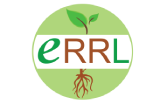ASTM D 5988 :
Standard Test Method for Determining Aerobic Biodegradation of Plastic Materials in Soil
The importance of aerobic biodegradability testing lies in understanding how plastic materials break down in the environment. As plastic disposal becomes a significant issue, this test method provides valuable insights into the degree and rate of biodegradation by soil microorganisms. The results help estimate the biodegradability level and the time it takes for plastics to mineralize in aerobic soil environments.
Key Points :
Addressing Plastic Waste: With the escalating use of plastics and growing concerns about their impact on the environment, this test method offers a solution to assess how long plastic materials will persist in aerobic soil conditions. By measuring the evolved carbon dioxide as the plastic interacts with soil over time, we gain valuable data on biodegradation.
Utilizing Soil Inoculum: Soil is a rich source of microorganisms, making it an ideal environment for evaluating plastic biodegradability. When properly maintained with adequate moisture and oxygen levels, the biological activity in soil is substantial, providing valuable data for biodegradability assessments.
Scope of the Test Method :
Determining Biodegradability : This test method is designed to evaluate the degree and rate of aerobic biodegradation for plastic materials, including any additives present, when in contact with soil under controlled laboratory conditions.
Comparative Assessment : The test method compares the biodegradability of the plastic material to that of a reference material in an aerobic environment. This enables researchers to understand how a plastic material performs relative to a known benchmark.
Applicability : The test is applicable to all plastic materials that do not inhibit the bacteria and fungi naturally present in the soil. It provides a comprehensive evaluation of the plastic’s biodegradability potential in soil environments.
In conclusion, aerobic biodegradability testing of plastic materials in soil is a crucial tool in understanding the fate of plastics in the environment. By evaluating how plastic materials interact with soil microorganisms, we can make informed decisions about sustainable waste management practices and reduce the environmental impact of plastic waste.
